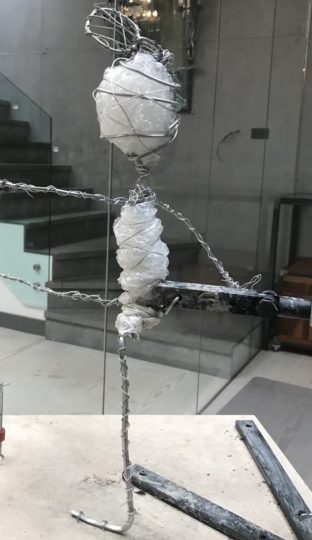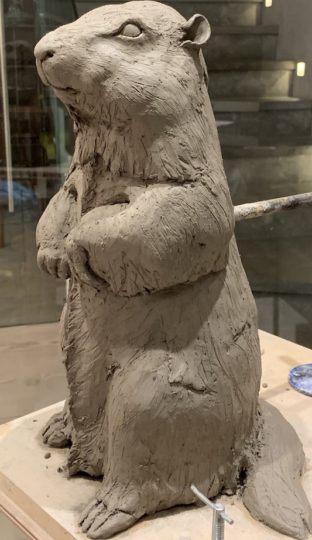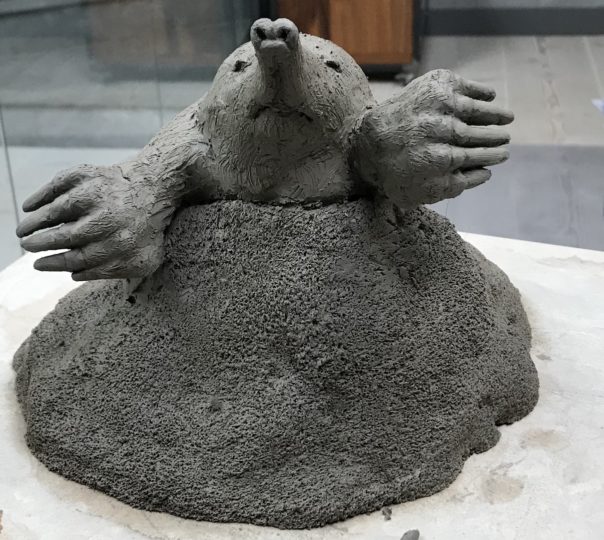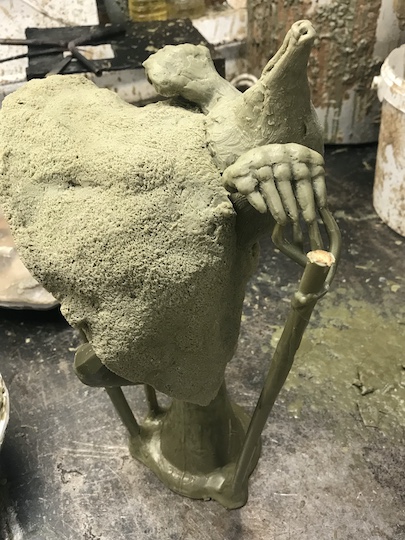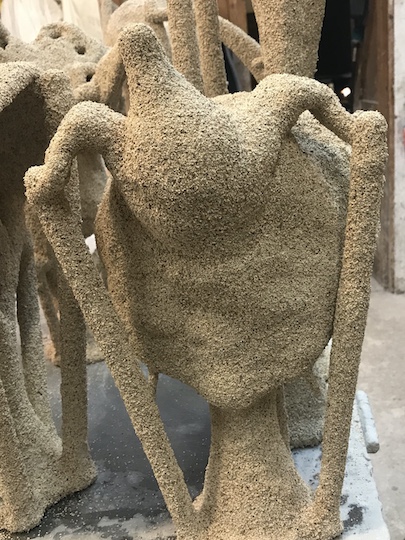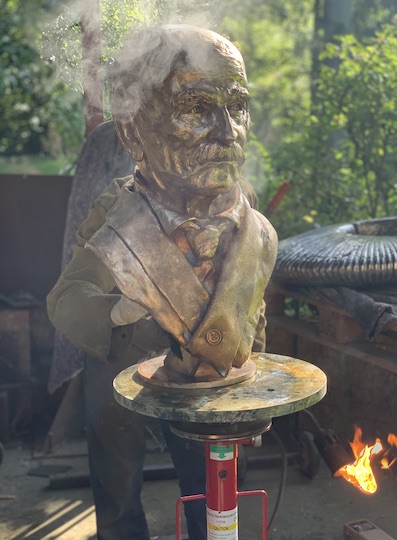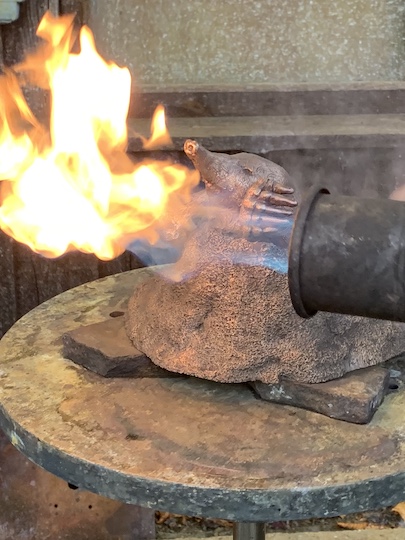The first step at the foundry is the Mould Making.
Once the clay sculpture is leather hard, but not dry, a silicon rubber mixture is painted in several layers on the sculpture capturing every tiny detail. This rubber mould is an exact negative of the clay sculpture.
After the layers are complete, a final hard jacket of fibreglass is applied to the soft rubber mould which is held together by screws that are placed in the outer jacket this way the mould can be opened up like a clam and the clay sculpture released and discarded.
Now follows the Wax Pouring of the sculpture.
Liquid wax is poured in several layers at different temperatures into the mould. Once the ‘wax sculpture’ is cooled it is removed from the mould. It will be pieced back together and all imperfections such as air bubbles or seam lines are removed. At this point I have a last look at the sculpture to make last minutes corrections.
All of these processes have to be repeated every time a new sculpture of an existing edition (from an existing mould) is being made.


